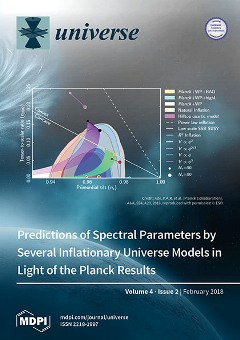We consider diverse deformed Bose gas models (DBGMs) focusing on distributions and correlations of any order, and also on deformed thermodynamics. For so-called
-deformed Bose gas model (
-DBGM), main thermodynamic aspects are treated: total number of particles, deformed partition function,
[...] Read more.
We consider diverse deformed Bose gas models (DBGMs) focusing on distributions and correlations of any order, and also on deformed thermodynamics. For so-called
-deformed Bose gas model (
-DBGM), main thermodynamic aspects are treated: total number of particles, deformed partition function, etc. Using a geometric approach, we confirm the existence of critical behavior—Bose-like condensation; we find the critical temperature
depending on
so that
for
. This fact and other advantages of
-DBGM relative to the usual Bose gas, e.g., stronger effective inter-particle attraction (controlled by the parameter
), allow us to consider the condensate in
-DBGM as a candidate for modeling dark matter. As another, quite successful application we discuss the usage of the two-parameter (
)-deformed BGM for effective description of the peculiar (non-Bose like) behavior of two-pion correlations observed in the STAR experiment at RHIC (Brookhaven). Herein, we point out the transparent role of the two deformation parameters
and
q as being responsible for compositeness and (effective account of) interactions of pions, respectively.
Full article





